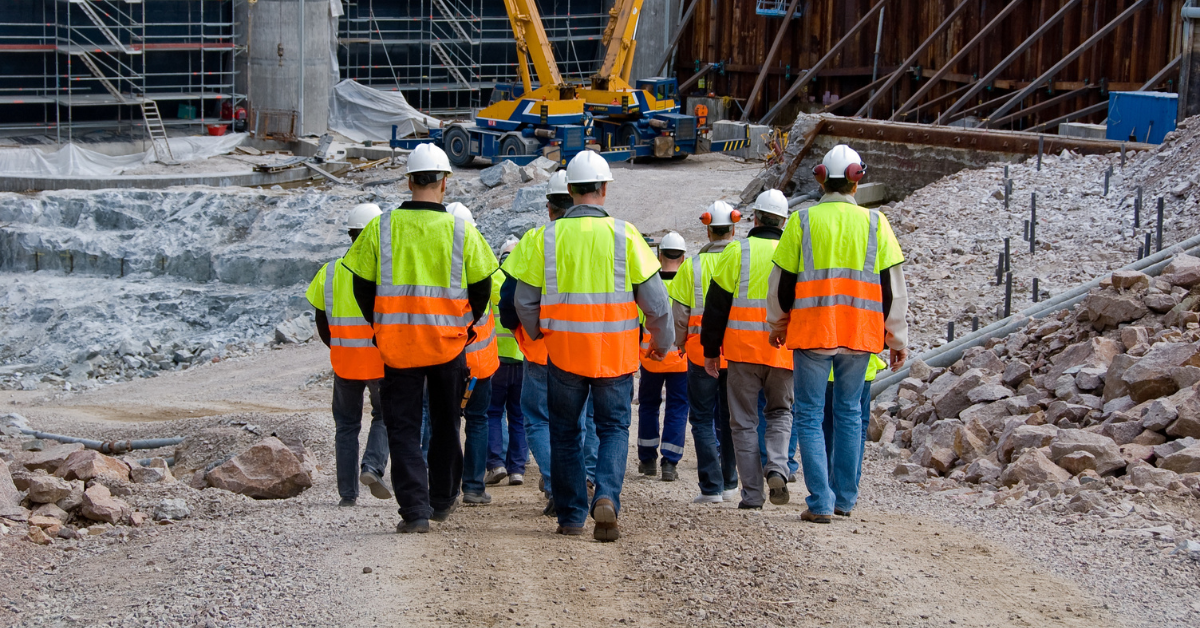An incoming labor law may transform heat safety in the construction field.
On July 2, the Occupational Safety and Health Administration (OSHA) proposed a new standard to protect workers nationwide from the risks of excessive heat. The rule may take effect within the next year.
In the construction industry, which accounts for 34% of all heat-related deaths, the OSHA heat standard could be a life-saving measure. Your construction firm can get ahead of the game—protecting workers, boosting your reputation, and ensuring long-term compliance—by implementing stronger heat safety protocols today. Here’s how.
What Is the New OSHA Heat Standard?
The new OSHA heat standard is a safety regulation that will require employers to develop and follow a formal heat injury and illness prevention plan (HIIPP) and continually evaluate heat risks. The standard—which kicks in when employees work in environments 80 degrees or warmer for over 15 minutes in any 60-minute period—requires adequate safety measures, including:
- Access to cool drinking water and cooled break areas
- Protocols for acclimating new and returning employees
- Paid rest breaks for all crew members
Companies must also establish emergency response measures in case of heat-related illnesses.
As a federal rule, the OSHA heat standard could counter Texas’ recent deregulation of rest breaks if it passes. However, the agency is still accepting input from stakeholders—and historically, business groups have lobbied against similar regulations. A new Supreme Court ruling, which could limit the regulatory power of federal agencies, and potential post-election changes could also impact the effectiveness of the rule.
Regardless of the heat standard’s outcome, implementing OSHA’s recommendations can strengthen your company’s long-term financial and reputational standing.
How to Stay Compliant with the OSHA Heat Standard
Staying aligned with the OSHA heat standard starts with crafting a risk prevention plan. Follow these tips to proactively comply with incoming regulations, protect your workers, and avoid potential fines.
1. Train Supervisors to Recognize Heat Hazards and Illnesses
As the new OSHA rule takes effect, companies will be expected to provide annual heat safety training for all employees. This ongoing education is especially crucial for supervisors, who will be responsible for monitoring heat risks daily.
To get ahead, your firm can brief managers on OSHA’s current heat hazard assessment standards, so they can identify dangerous work environments based on environmental factors (like temperature humidity), clothing and PPE requirements, and workload.
Additionally, create and train supervisors on emergency response measures. Leaders should be able to identify the symptoms of heat stress, provide first-aid treatment, and follow key procedures for getting medical services.
2. Implement Employee Heat Safety Requirements
Recovery periods are essential when temperatures rise. Employees shouldn’t just have access to water and shade—they should be strongly encouraged to take regular breaks to cool down. Establishing requirements, such as taking paid hourly breaks in a chilled area, can urge employees to avoid skipping recovery periods and create a safety-first culture onsite.
Supervisors should be particularly mindful of encouraging hydration. Workers may forget to drink water until they feel thirsty—which may be too late. A recent study by the University of New Mexico found 60% of construction workers are dehydrated before they arrive at work. Provide easy access to cool water, as well as electrolyte drinks for longer jobs, and call for regular water breaks.
3. Add Extra Precautions for New Workers
Did you know most outdoor occupational fatalities occur within a few days of working in warmer environments? Giving employees time to acclimate to hot temps—especially if they’ll be wearing heat-inducing gear—can help you prevent severe illnesses on your construction crew and stay aligned with the OSHA heat standard. Provide heat safety training and require more frequent breaks until new workers adjust.
Gradual exposure is also key. OSHA recommends scheduling new workers for only 20% of their typical shift length on their first day. Each day after that, you can increase their work duration by another 20%. Use the same precautions for workers who haven’t worked in hot environments for a week or more—whether due to vacations or weather changes—to maximize safety.
4. Modify Work Schedules as Needed
Job sites in Texas can reach humid, triple-digit temperatures during summer afternoons. For construction workers in physically demanding roles—including roofers and cement masons, who experience the highest rate of heat-related deaths—this environment can be fatal.
It’s common for construction firms to reschedule workers to early morning and evening shifts during the summer. However, you can further increase heat safety by spreading out the most physically exerting tasks between different workers throughout the day. Leverage heavy equipment as much as possible to reduce manual labor.
5. Invest in Cooling Equipment and PPE
Perhaps the most effective way to prevent heat-related illnesses is by managing the temperature of your job sites. While it isn’t always possible to provide AC, proper ventilation and equipment like misting fans can help regulate workers’ body temperatures throughout the day. Additionally, consider equipping workers with cooling personal protective equipment (PPE) like heat-reflective clothing, cooling neck wraps, and vests with icepacks.
Strengthening Your Commitment to Heat Safety
A commitment to heat safety creates a win-win situation for employees and construction firms. Workers are protected from inhospitable conditions; employers can avoid costly injury claims and future penalties for noncompliance with the new OSHA heat standards. Plus, safety-first businesses can attract the many tradespeople in search of responsible employers—which has grown since the end of mandated rest and water breaks in Texas—amid a growing construction skills gap.
Partnering with an experienced construction staffing firm can further enhance your jobsite safety. When Skinner connects you to qualified skilled trades workers, we equip them with up-to-date safety training to help you reduce incidents onsite. Our thorough emergency processes provide further assurance of a prompt response in the event that injuries or illnesses do occur.
Enhance your safety programs with support from an experienced skilled trades staffing firm. Reach out to Skinner today.
Related Articles:
Are Construction Workers Happy? How to Boost Employee Satisfaction & Improve Your Bottom Line
3 Ways to Avoid Construction Worker Misclassification & Stay Compliant
Certified Payroll Reporting in Construction

